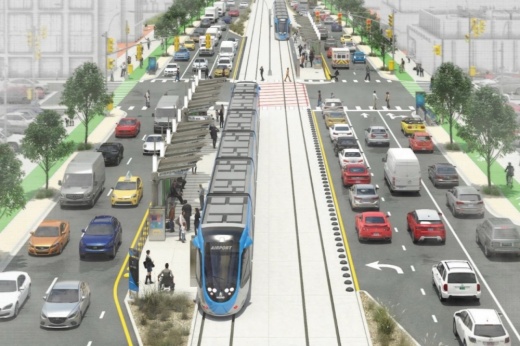Project Connect will bring three new rail lines to the city, although their completion is still years down the line. Those additions include a pair of light rail lines, one with a north-south route through Central Austin and the other providing an east-west connection between downtown and the airport, in addition to a new MetroRail line running through Austin's east side.
The program also includes expansions of Capital Metro's regional bus system that are already underway, the double-tracking of the existing MetroRail's northern end and the use of at least $300 million to combat displacement along transit routes.
During an Aug. 4 meeting of City Council's mobility committee, representatives with CapMetro and the Austin Transit Partnership—the group created to manage Project Connect's rollout—briefed city officials on the light rail program's next steps and growing costs ahead of its eventual shift into more formal engineering work and construction.
Following Austin voters' 2020 approval of a tax hike to fund Project Connect, planners stressed that taxpayers will not be asked for additional funds to build out the transit network as proposed. However, the soaring cost projections for light rail additions have led to renewed evaluation of the "choices and tradeoffs" needed to complete the project, according to Gina Fiandaca, assistant city manager for mobility.
Project Connect's light rail was initially expected to cost around $5.8 billion to lay out, an estimate that jumped to more than $10 billion earlier this year as design work continued. Planners have cited inflation, real estate costs and program design updates as contributors to that increase and now say the total could grow more based on those trends.
“It’s the exact right time for us to be coming to grips with the realities of the program and making choices. And we’ve got time to make those hard choices," said Peter Mullan, ATP's chief of architecture and urban design. “Costs on the program have been rising, and I think we can expect them to continue to rise based on some things that are within our control and some things that are not within our control. This is the reality of our world these days, and so it’s really beholden to us to make sure that, going forward, that the program is aligned with our funding availability. And so that’s what we’re committed to doing."
With the project slated to move through its initial development phase and into engineering in the near future, Mullan noted that planners remain poised to influence costs in a more significant way ahead of groundbreaking. As engineering wraps up and construction kicks off, however, he said expenses will likely rise even further while planners' influence over those costs is limited, making now the best time for further review.
“We had projected a certain process. With new information, we’ve amended the process, but even that new process is still happening within the context of the federal project development process. So we’re still within those guardrails," Mullan said. "We’re doing the right thing at the right time.”
The analysis also comes at a time when both CapMetro and the ATP are seeking new leadership. CapMetro's former deputy CEO Dottie Watkins is now serving as the agency's interim president and CEO following the departure of Randy Clarke earlier this year. And the ATP is also operating under an interim executive director, Greg Canally, who took over for Clarke in that role this spring.
Mullan said Aug. 4 that ATP's look for a new director is "getting underway," and that the group's board will soon be approving a contract with a search firm to identify potential candidates. Canally's current contract is set to expire in January, Mullan said.
Meanwhile, Project Connect details remain in the works, and final design plans will be presented to local officials and community members before the program moves forward. District 5 Council Member Ann Kitchen said both CapMetro's board and City Council will be signing off on recommended plans before planners move into their next phase and promised the opportunity for additional public input before those votes.
“The goal of course ... is to work hand-in-glove with the community and to work hand-in-glove with the city and CapMetro so that by the time the bodies get to the point of voting, there’s consensus," Kitchen said.
And regardless of any changes in the works, officials said Project Connect's rail routes will be completed under its current funding system without any new effects on city taxpayers.
“We’re committed to implementing the vision and doing that without new taxes. I just want to be clear about that: We are not anticipating at this point any new taxes to support the program. We have a great funding mechanism; we’re going to use it," Mullan said.





